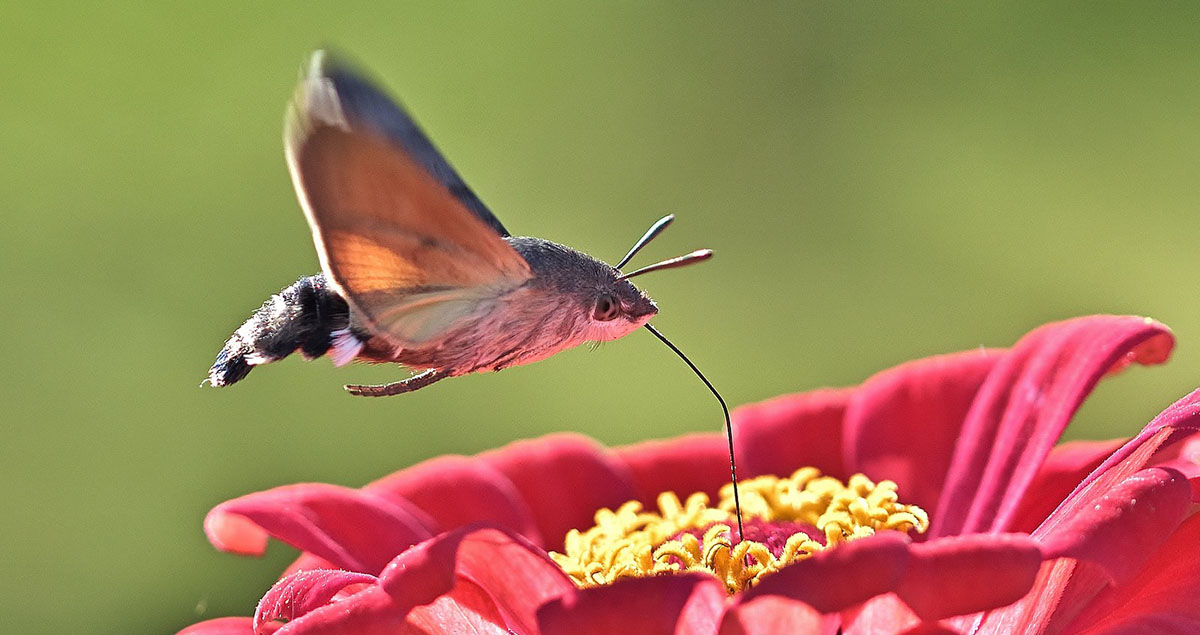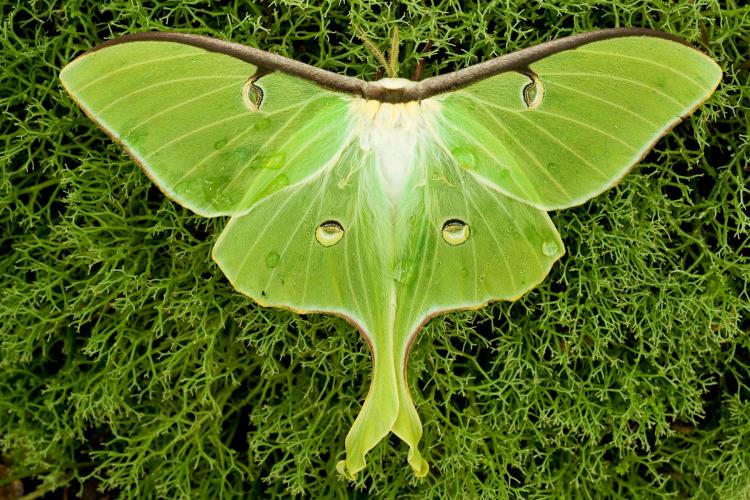Hummingbird Moths in Georgia: A Guide to Identification and Behavior
Hummingbird moths are a fascinating and unique insect species that can be found in Georgia. These moths are known for their resemblance to hummingbirds, with their long proboscis and rapid wing movements. They are often mistaken for actual hummingbirds due to their similar appearance and behavior.
Hummingbird moths are commonly found in Georgia during the summer months, particularly in the northern regions of the state. They are attracted to flowers and can often be seen hovering around them, using their long proboscis to feed on nectar. Despite their striking appearance, hummingbird moths are relatively unknown to many people, making them a hidden gem of Georgia’s insect population.
Appearance and Behavior
Hummingbird moths are fascinating creatures that are often mistaken for hummingbirds due to their similar appearance and behavior. These moths are typically found in Georgia during the summer months and are known for their unique flying style.
Hummingbird moths are small in size, measuring only about 2 inches in length. They have a narrow body and long wings that beat rapidly, allowing them to hover in place just like a hummingbird. Their wings are transparent and have a slight iridescence to them, which adds to their beauty.
These moths are also known for their feeding behavior. They are attracted to brightly colored flowers and will often hover in front of them, using their long proboscis to suck up nectar. This behavior is similar to that of a hummingbird, which is why they are often mistaken for one.
Hummingbird moths are also nocturnal creatures and can often be seen flying around at dusk or dawn. They are attracted to light and will often fly near porch lights or other sources of light. This behavior can make them a common sight in residential areas during the summer months.
In terms of coloration, hummingbird moths can vary in appearance. Some have a brown or gray body with yellow stripes, while others have a more vibrant coloration with pink or green hues. However, all of them have a distinct hummingbird-like appearance and behavior that sets them apart from other moths.
Habitat and Distribution
Hummingbird moths are found throughout Georgia and are commonly seen in gardens, meadows, and other areas with abundant nectar sources. They can also be found in forested areas, but are more commonly seen in open spaces.
These moths are found throughout the state, but are most commonly seen in the northern regions of Georgia. They are also found in other parts of the United States, including the Midwest and the Northeast.
Hummingbird moths are attracted to a variety of flowering plants, including bee balm, phlox, and butterfly bushes. They are also attracted to fruit trees and other plants that produce sweet nectar.
These moths are most active during the day, but can also be seen at night. They are more commonly seen during the summer months, when there is an abundance of nectar sources available.
In Georgia, hummingbird moths are not considered to be a threatened or endangered species. However, they are vulnerable to habitat loss and pesticide use, which can have a negative impact on their populations.
Life Cycle and Reproduction
Hummingbird moths, also known as sphinx moths, have a relatively short lifespan of only a few months. They typically mate during the summer months, with females laying their eggs on the leaves of host plants, such as honeysuckle, evening primrose, or phlox.
After a few days, the eggs hatch into small caterpillars that begin to feed on the host plant. As they grow, the caterpillars molt several times and eventually pupate in a cocoon. The pupal stage lasts for about two to three weeks, after which the adult moth emerges.
The adult hummingbird moth has a wingspan of two to three inches and is active during the day, feeding on nectar from flowers. They are important pollinators for many plants and are often mistaken for hummingbirds due to their similar appearance and behavior.
Overall, the life cycle of hummingbird moths is relatively short and simple, but they play an important role in the ecosystem as pollinators.
Interactions with Humans
Hummingbird moths in Georgia have a significant impact on the ecosystem, but their interactions with humans are limited. These moths are not harmful to humans and do not pose any danger. In fact, they are often a source of fascination and wonder for people who encounter them.
Hummingbird moths are known for their unique ability to hover in mid-air while they feed on nectar from flowers. This behavior often leads people to mistake them for actual hummingbirds. However, once people realize that they are looking at a moth, they are usually impressed by the moth’s agility and beauty.
While hummingbird moths do not cause any harm to humans, they can be beneficial to gardeners. These moths are important pollinators and can help to increase the yield of crops and flowers. Gardeners who want to attract hummingbird moths to their gardens can plant specific types of flowers, such as bee balm, phlox, and petunias, which are known to be attractive to these moths.
Overall, the interactions between humans and hummingbird moths in Georgia are generally positive. These moths are a fascinating and beautiful part of the state’s ecosystem, and they can provide benefits to gardeners and farmers. As long as people take care not to harm these creatures, there is no reason why they cannot continue to coexist with humans in Georgia and beyond.
Conservation Status
Hummingbird moths in Georgia are not currently listed as threatened or endangered by the United States Fish and Wildlife Service. However, they are still vulnerable to habitat loss and pesticide use, which can have negative impacts on their populations.
One of the main threats to hummingbird moths is the destruction of their natural habitats. Georgia’s forests, meadows, and gardens provide important habitats for these moths, but as urbanization and agriculture expand, these habitats are being destroyed. Additionally, the use of pesticides can harm not only hummingbird moths but also the plants they rely on for food, shelter, and reproduction.
To protect hummingbird moths and their habitats, it is important to promote conservation efforts that focus on preserving and restoring their natural habitats. This can include planting native plants, reducing pesticide use, and creating protected areas where hummingbird moths can thrive.
Overall, while hummingbird moths in Georgia are not currently in danger of extinction, it is important to take steps to protect their habitats and ensure their long-term survival.

